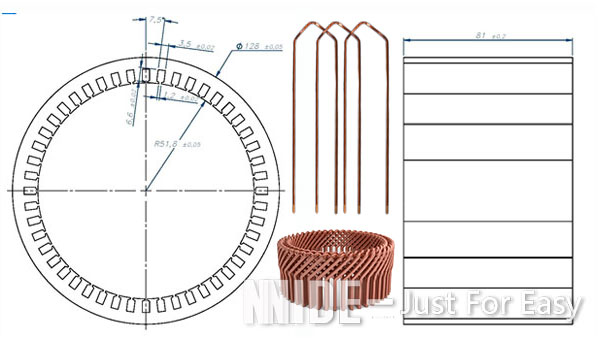Industry News
New Energy Electric Vehicle Motor Types
NIDE Group provides various motor manufacturing solutions for global customers. Our new energy vehicle motor manufacturing solutions have also been recognized by partners and have been continuously upgraded to meet customer needs.
At present, new energy vehicles are a very popular way of travel. As a substitute for traditional engine (gearbox) functions, the performance of the motor and electronic control system directly determines key performance indicators such as climbing, acceleration, and top speed of electric vehicles. So, do you know the motor of the new energy electric vehicle?
Motor drive response is one of the three core components of new energy vehicles, and is the key execution structure of electric vehicle drive. Its driving characteristics determine the key performance indicators of vehicle driving. The key components of the motor drive system are the motor, power converter, regulator, detection sensor and power supply. Different from most industrial motors, the driving motors used in automobiles should have the characteristics of wide speed regulation range, large starting torque, large reserve power and high efficiency. In addition, they need to be highly reliable, resistant to high temperature and humidity, simple in structure, low in cost, simple in maintenance and suitable for mass production. In the future, my country's electric vehicle drive motor system will develop in the direction of permanent magnetization, digitalization and integration. At present, the motors used in electric vehicles generally include DC motors, AC induction motors, permanent magnet motors and switched reluctance motors.
1. Electric vehicle DC motor
Advantages: large starting acceleration, good electromagnetic torque adjustment characteristics, convenient speed adjustment, simple adjustment device, and low cost.
Disadvantages: Has a mechanical commutator. When running at high speed and heavy load, there will be sparks on the surface of the commutator, and it is not advisable for the motor speed to be too high. Compared with other drive systems, it is at a disadvantage and has been gradually eliminated.

2. AC Induction Motors for Electric Vehicles
The stator of an induction motor is used to generate a magnetic field, and it consists of a stator core, stator windings, core housings, and bearings that support the rotor shaft. AC motors have the advantages of low price, easy maintenance, and small size, but the adjustment of AC motors is quite complicated. It has become the first choice for AC drive electric vehicles.
3. Electric vehicle permanent magnet motor
Permanent magnet motors use permanent magnets to generate air-gap flux, replacing field coils in DC motors and stator exciters in induction motors. The permanent magnet motor has the advantages of high efficiency, high moment of inertia ratio, high energy density, etc., especially its low speed and high torque, which can meet the needs of vehicles driving on complex and changeable roads. It is a high-performance low-carbon environmental protection motor, which is expected to compete with rare earth permanent magnet materials for AC induction motors in the market. Especially in the small and medium power range, it has been widely used.
4. Electric vehicle switched reluctance motor
The stator and rotor of the switched reluctance motor are basically a doubly salient pole structure formed by laminating ordinary silicon steel sheets.
Advantages: simple and reliable, wide speed range, high efficiency, flexible adjustment, low cost.
Disadvantages: large torque fluctuations, high noise, position checker, non-linear characteristics, etc. Application is limited.
The motor is the focus of new energy vehicles. The motor and electronic control system of new energy vehicles must meet a variety of needs: frequent start and stop, acceleration and deceleration, low speed/climbing requires high torque, high speed requires small torque, and a large speed range; hybrid vehicles require Handle special functions such as motor starting, motor power generation, and braking energy feedback.
NIDE Group provides various motor manufacturing solutions for global customers. Our new energy vehicle motor manufacturing solutions have also been recognized by partners and have been continuously upgraded to meet customer needs.













